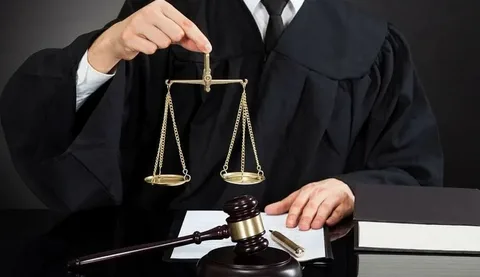
The allure of speed is a pervasive element in today’s fast-paced world. From the roaring engines of sports cars to the breakneck speeds of bullet trains, the quest for velocity touches many aspects of modern life. More than a simple means to an end, speed has become a symbol of efficiency, power, and freedom—a drive for many to push their abilities and machines to the limit. However, this thirst for speed doesn’t come without its caveats. Society has put measures in place to regulate the rush, creating boundaries in the form of speed limits designed to ensure public safety.
While the desire to accelerate beyond these set limits may be tempting, it is important to remember that the consequences of doing so can be severe. Exceeding posted speed limits can lead to a variety of legal repercussions, some of which may require the help of a speeding ticket lawyer. Examples include fines and penalty points to license suspension or even arrest, depending on the severity of the offense. Beyond these personal consequences, the potential for causing accidents also increases with speed, putting both the speeder and public at risk.
The Legal Definition of Speeding
When it comes to understanding the legal definition of speeding, it essentially revolves around driving at speeds that exceed the posted speed limits on any given road. Speed limits, which are typically clearly displayed on road signs, are put in place by traffic authorities to dictate the maximum safe traveling speed for vehicles in specific areas. These limits can vary based on a range of factors, including road type, weather conditions, and the time of day. Beyond fixed speed limits, there are conditions where legal speed may fluctuate—such as in school zones during certain hours or in construction zones with temporary speed advisories.
Different jurisdictions may define speeding in diverse ways, reflecting variations in local laws, enforcement practices, and road safety strategies. Some regions employ absolute speed limits, where surpassing the limit by any amount breaches the law, while others use a presumed speed limit approach, allowing drivers to contest the citation by proving their speed was safe under the circumstances. Understanding these definitions is important for motorists to stay on the right side of the law and maintain safe driving practices.
Legal Repercussions for Speeding Violations
When a driver is stopped for driving over the speed limit, the repercussions faced in a courtroom can differ based on the specifics of the infraction. Generally, violators may be subjected to sanctions and financial penalties, which tend to be proportional to the degree by which the speed limit was exceeded, and these fines can become a considerable economic strain. Beyond the burden of fines, individuals often encounter probationary terms, compelling them to comply with various directives in order to retain their driving privileges.
Restrictions under probation can confine one’s autonomy, necessitating periodic meetings with a supervisory officer and possibly demanding attendance at traffic education programs or contribution to community service. Speeding infractions also typically result in points on a driver’s record, potentially causing an uptick in auto insurance rates and the jeopardy of license suspension if an excessive number of points are accumulated. When speeding is severe and coupled with hazardous driving or causing an accident, the driver might confront more serious legal charges. This may entail allegations of hazardous conduct or vehicular homicide in dire situations, carrying more stringent consequences including possible incarceration.
Consequences of Speeding on Driving Rights
Speeding is more than a trivial offense; it can profoundly affect one’s driving rights. When a driver greatly exceeds the speed limit, their own safety and the well-being of others are jeopardized. What’s more, they might face stern measures like the suspension or cancellation of their driving license. These actions help to emphasize the seriousness of compliance with traffic regulations.
In situations where a license is suspended, regaining it typically entails meeting specific legal criteria, which can include the payment of monetary penalties, enduring a probationary term, and confirming the resolution of any additional legal matters. Also, one might need to take a driver safety program to get their driving privileges back. These instructional courses are valuable as they provide insights on safe driving techniques, inform about changes in traffic laws, and aim to mitigate the chances of further transgressions. Completing such a program can show a driver’s dedication to conscientious driving and might even result in lowered insurance premiums.
Speeding and Insurance Implications
When you receive a speeding ticket, it’s not just the immediate fine that impacts your wallet; your future insurance rates are also at stake. Insurance companies often view speeding tickets as indicators of risky driving behavior. As a result, they may recalibrate your rates to reflect the increased chance of a claim. When assessing the risk, insurers will consider the severity of the infraction, your driving record, and the frequency of such violations.
Those with a lead foot can experience a massive increase in their premiums, as companies aim to compensate for the potential costs associated with high-speed accidents. If you find yourself in the aftermath of a speeding violation, it’s important to take steps to manage your insurance costs. Techniques include attending a defensive driving course, which might convince your insurer to cut you some slack, or shopping around for a more forgiving policy.
Public Safety and Community Response
Speeding is not just a violation of traffic rules; it’s a public health concern that poses risks to drivers, pedestrians, and the broader community. When vehicles travel at high speeds, the potential for accidents increases, leading to more severe injuries and fatalities. Recognizing this, communities across the nation are taking proactive steps to mitigate the dangers of speeding. Through community-driven initiatives, local groups are working hand-in-hand with law enforcement to implement strategies like setting up speed cameras, deploying traffic calming measures such as speed bumps, and increasing patrols in areas identified as high-risk.
What’s more, educational programs and campaigns play a key role in raising awareness about the consequences of speeding. These efforts often involve schools, community centers, and collaboration with local media, spreading the message that responsible driving saves lives. This approach, combining enforcement with education, seeks to cultivate a culture of safety on the roads, aiming for a future where public safety is upheld, and community members can travel without the shadow of speeding-related dangers.
Speeding: A Gateway to Heavier Traffic Violations
Speeding is often perceived as a minor offense, a simple bending of the rules that many drivers indulge in. However, within the spectrum of driving violations, speeding holds a more insidious role than most realize. It acts as a gateway behavior that paves the way for a progression into more dangerous and reckless driving habits. This incremental shift is seldom abrupt, subtly eroding a driver’s adherence to safety until they find themselves engaging in far riskier conduct. As speedometers inch past the limit, so too does the temptation to make rash decisions, ignore traffic signals, or zigzag through traffic, behaviors which collectively steepen the slope toward outright reckless driving.
Recognizing this pattern, legal systems have developed strategies to interrupt this trajectory of escalating offenses. These include graduated penalties that increase with repeated infractions, required attendance in defensive driving courses, and even the use of technology such as speed cameras, which serve as both a deterrent and a tool for enforcement. By taking a firm stance on speeding, the hope is to reinforce the importance of traffic laws and reduce the likelihood that drivers will escalate to more severe violations that can have dangerous or even fatal consequences.
In summary, speeding is a serious issue with far-reaching consequences. It endangers public safety and can lead to major legal troubles, including fines, license suspension, and increased insurance rates. What’s more, it often leads to more dangerous driving behaviors. The collective efforts of law enforcement, educational campaigns, and community initiatives emphasize the importance of adhering to speed limits, highlighting the role of responsible driving in ensuring public safety and personal accountability on the roads.






